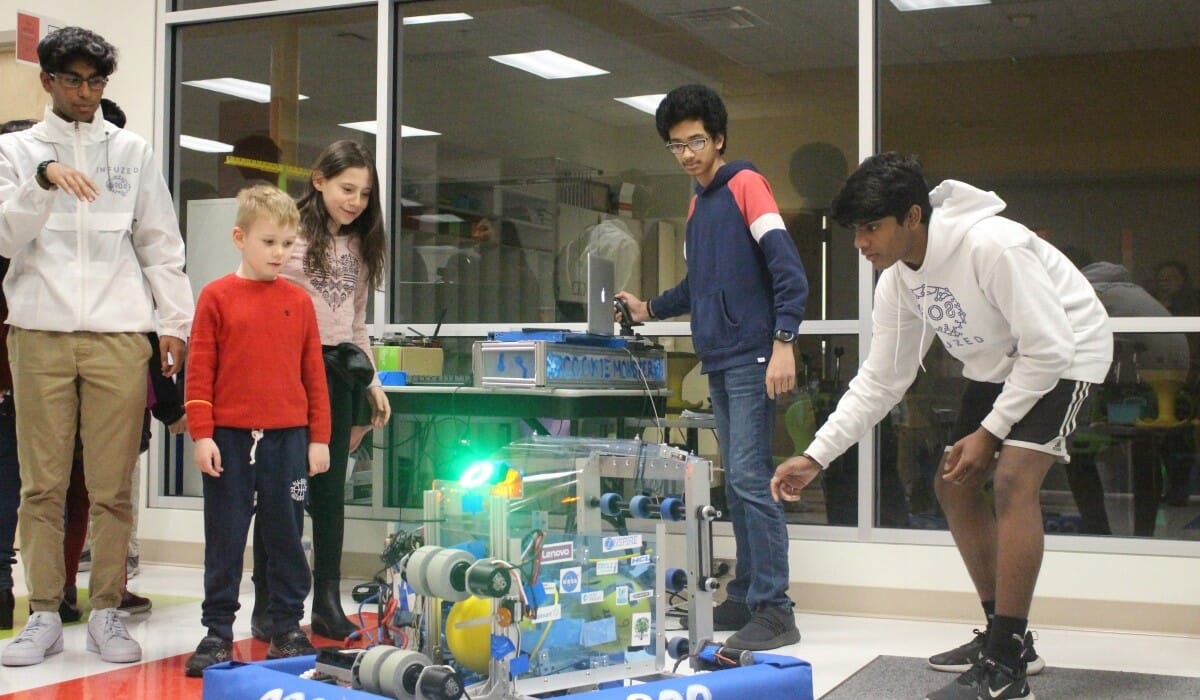STEAM Initiative: Inspiring Creativity and Innovation in Education

The STEAM (Science, Technology, Engineering, Arts, and Mathematics) initiative is revolutionizing education by fostering interdisciplinary learning and encouraging creativity and innovation among students. By integrating these disciplines, the STEAM approach prepares students for the challenges of the 21st century and equips them with the skills and mindset needed for future success. In this article, we explore the concept of the STEAM initiative, its significance, and the impact it has on education.
The Foundations of the STEAM Initiative
The STEAM initiative builds upon the foundation of STEM education by incorporating the arts and design into the curriculum. Here’s a closer look at the core components:
1. Science
The science component of STEAM focuses on developing scientific knowledge, critical thinking skills, and the ability to conduct experiments and analyze data. Students explore the natural and physical world, make observations, and learn to apply scientific concepts to real-world problems.
2. Technology
The technology component emphasizes the use of tools, software, and digital resources to solve problems and enhance learning. Students develop technological literacy, computational thinking, and digital skills that are essential in today’s technology-driven world.
3. Engineering
The engineering component encourages students to apply their scientific and mathematical knowledge to design, create, and innovate. They learn the engineering design process, problem-solving strategies, and collaboration skills to tackle real-world challenges and construct practical solutions.
4. Arts
The arts component adds creativity, imagination, and self-expression to the STEAM initiative. Students engage in artistic practices such as visual arts, music, theater, and dance, fostering innovation, aesthetic appreciation, and the exploration of diverse perspectives.
5. Mathematics
The mathematics component forms the foundation of logical reasoning, problem-solving, and quantitative analysis. Students develop mathematical fluency, critical thinking skills, and the ability to apply mathematical concepts in various contexts.
The Significance of the STEAM Initiative
The STEAM initiative holds immense significance in education and society at large. Here are a few reasons why it is vital:
1. Holistic and Interdisciplinary Learning
By integrating multiple disciplines, the STEAM approach offers a holistic and interdisciplinary learning experience. Students see the interconnectedness of subjects and develop a well-rounded skill set that prepares them for diverse career paths and problem-solving in the real world.
2. Fostering Creativity and Innovation
The inclusion of arts in the STEAM initiative nurtures creativity, imagination, and innovative thinking. Students are encouraged to think outside the box, explore diverse perspectives, and approach challenges with originality. This fosters a culture of innovation and prepares students to tackle complex problems creatively.
3. Building Critical Skills
The STEAM initiative equips students with essential 21st-century skills, including critical thinking, collaboration, communication, and problem-solving. These skills are highly valued in the modern workforce and empower students to navigate an ever-changing world.
4. Encouraging Diversity and Inclusion
The arts component in STEAM celebrates cultural diversity and fosters inclusivity. It provides a platform for students to express their unique identities, stories, and perspectives. The integration of arts ensures that education embraces the richness of human experiences and nurtures a sense of belonging.
The Impact of the STEAM Initiative
The STEAM initiative has a profound impact on students, educators, and society as a whole. Here are a few notable effects:
1. Engaged and Motivated Students
The STEAM approach promotes active learning and student engagement. By connecting classroom concepts to real-world applications, students find relevance and purpose in their education, leading to increased motivation and enthusiasm for learning.
2. Collaboration and Teamwork
The interdisciplinary nature of the STEAM initiative encourages collaboration and teamwork among students. They learn to work effectively in groups, leverage diverse perspectives, and combine their strengths to solve complex problems. This prepares them for the collaborative nature of the modern workplace.
3. Future-Ready Workforce
STEAM education produces graduates who are well-equipped to thrive in the digital age. They possess a broad range of skills, including technical expertise, creative thinking, adaptability, and problem-solving abilities. These qualities are highly sought after in industries that require innovation and technological proficiency.
4. Advancements in Research and Innovation
The STEAM initiative fuels advancements in research and innovation. By encouraging students to explore and experiment, it nurtures a culture of curiosity and discovery. This can lead to groundbreaking discoveries, inventions, and technological advancements that benefit society as a whole.
Implementing the STEAM Initiative
To effectively implement the STEAM initiative, educators and schools can consider the following strategies:
1. Professional Development
Provide professional development opportunities for educators to enhance their understanding of STEAM education, pedagogical approaches, and curriculum integration. This enables them to create engaging and meaningful learning experiences for students.
2. Collaboration and Partnerships
Foster collaboration between teachers, schools, and external organizations to bring diverse expertise and resources into the STEAM education ecosystem. This can involve partnerships with museums, research institutions, industry professionals, and artists to provide real-world connections and experiences.
3. Access to Resources and Technology
Ensure students have access to necessary resources, tools, and technology to fully engage in STEAM learning. This may involve providing well-equipped laboratories, maker spaces, art studios, and access to digital tools and software.
4. Encouraging Creativity and Exploration
Promote a supportive and inclusive environment that encourages creativity, exploration, and risk-taking. Emphasize the value of failure as an opportunity for learning and growth, and celebrate students’ unique ideas and approaches.
Conclusion
The STEAM initiative is transforming education by integrating science, technology, engineering, arts, and mathematics, fostering creativity, innovation, and interdisciplinary learning. This approach equips students with the skills, knowledge, and mindset necessary for success in the modern world. By embracing the STEAM initiative, educational institutions are preparing students for the challenges and opportunities of the future, empowering them to become lifelong learners, critical thinkers, and contributors to society. Through the integration of arts and design, the STEAM initiative celebrates diversity, nurtures creativity, and cultivates an environment where students can explore, create, and innovate. By implementing effective strategies, providing access to resources, and promoting collaboration, schools can create engaging STEAM experiences that inspire students and prepare them to thrive in a rapidly evolving global landscape. The STEAM initiative is not only transforming education but also shaping the future by nurturing the next generation of innovators, problem solvers, and leaders who will drive progress and make a positive impact on the world.




